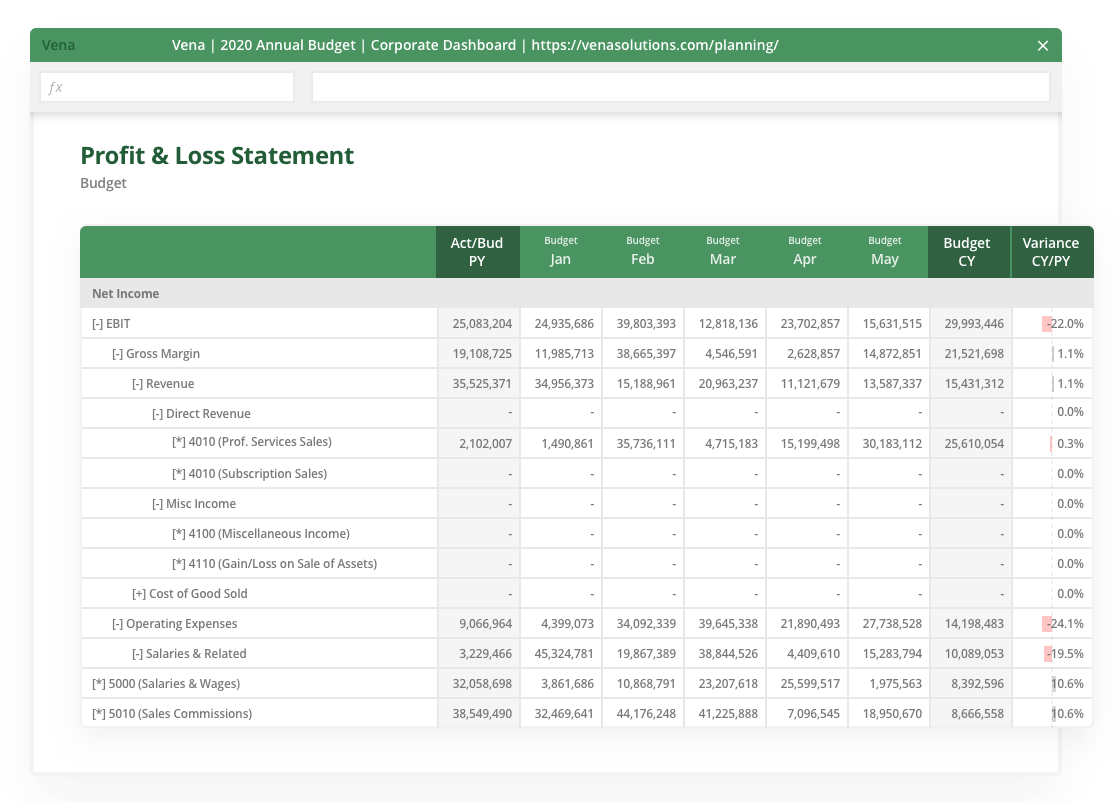

I always think of Excel as every financial analyst’s favorite Swiss army knife. The thing I love most about Vena is that it doesn’t take that away.

Having started his career in the theatre industry, Aaron Andersen is a natural storyteller. But when he joined the Museum of Science and Industry (MSI) as Finance Director in 2018, static modeling and reporting made it difficult to tell the story behind the budgets his team was building. That, in turn, made it tough to engage stakeholders across the organization in strategic planning.
Variance reporting was cumbersome, budget consolidation was tedious and cross-functional collaboration was difficult to facilitate. Important financial assumptions that Aaron’s team relied on for operational planning—such as attendance revenue and payroll expenses—were always based on outdated actuals. That made it tough for Aaron's team to look ahead and empower the museum's decision makers with reliable long-term revenue projections.
“In order to properly analyze how our budget was coming together, we’d have to consolidate all these different spreadsheets into one giant spreadsheet, then run 20 different pivot tables on it,” he says. “It was very labor intensive, and the information we did capture about people’s budgetary assumptions was minimal.”
Aaron and his colleagues were “traffic cops for data” before Vena. Instead of delivering insights in a format the business could understand, Aaron and his teammates would spend up to 10 hours every month just meeting with department heads to decipher their budget to actuals variances.
“If you create a budget but can’t explain what it’s supporting—or what it means for how you allocate resources—it’s not going to work,” he says. “Our budgets and reports were static before Vena. We couldn’t get into the details behind the numbers.”

When Aaron and his team partnered with Vena, the first order of business was to standardize and automate MSI’s monthly reporting process so cross-functional teams could start planning from the same page. Vena’s direct integration with Sage Intacct—the museum’s existing ERP system—created one source of truth for budgets, forecasts and actuals while eliminating the hassle of keying in data manually.
“As soon as the books are closed, we just click a button in Vena and everyone is sent an email telling them their reports are ready,” says Aaron. “Department heads can add comments to explain their variances, save those comments in the cloud and even drill down into the transactional details from Sage—all in the same connected reports.”
This new reporting structure helped Aaron figure out how to build new budgeting templates and advanced financial models. Using Vena’s Extended Planning capabilities, Aaron was able to connect all of MSI’s unique data models—such as attendance, workforce, CapEx and more—right back to the budget in real time. Also, with Vena’s Excel interface delivering comfort and familiarity, rolling out the platform across multiple departments was easy.
“I always think of Excel as every financial analyst’s favorite Swiss army knife,” says Aaron. “The thing I love most about Vena is that it doesn’t take that away.”

Now that their data is all in one place, MSI’s biggest result with Vena has been the ability to plan as a team and drive agile decision making based on what-if analysis. Today, instead of using out-of-date numbers for reporting, Aaron can test budget and actuals against any number of future assumptions to always deliver a reliable snapshot of long-term revenue trajectory.
That level of insight has been crucial for business-wide processes such as attendance planning, workforce planning, exhibit scheduling and more—especially as the museum deals with the fallout from COVID-19.
“Obviously, our attendance has taken a huge hit. But if we’d had to run all those scenarios from the ground up like we do our budget, it would have killed us,” says Aaron. “With Vena, we just pulled in the data and came up with a range of potential impact. It allowed us to be more precise about where we had to cut costs.”
Another major win has been the amount of time saved on all of MSI’s core FP&A processes. Because cross-functional stakeholders are more connected to budgeting and reporting, Aaron has been able to cut those variance meetings in half.
“When I started here, my boss told me to plan a couple of weekends in October when the whole team would have to come in for budget analysis,” says Aaron. “But that hasn’t been true with Vena at all, and that’s because we’re not playing traffic cop for data anymore.”
Over 2,000 leading companies grow with Vena. Start your journey today